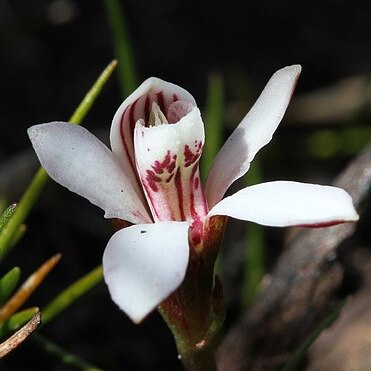A very small orchid without leaves. The stem is dark purple and has scales. It is about 10 cm long. There are 3-4 flowers. These are white or pink inside. They are brownish with red stripes outside. They only open wide for 1-2 days. Plants flower after fires.

